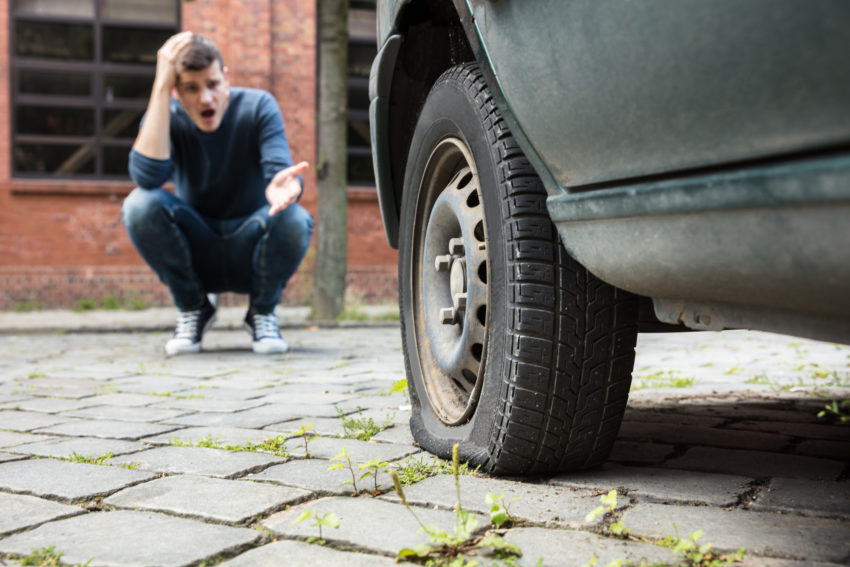
It’s hard to overestimate how important good tires are to your safety and the life of your vehicle. They carry the weight of your car and withstand the incredible pressure of the road every time you go for a drive.
You should have your tires checked regularly by a professional, especially before you take the car out for a long trip. In the meantime, however, it’s quick and easy to check out your tires on your own and look for any signs of potential issues. You can do it every week or even take a quick walk around every time you set out in the morning.
Improper Inflation
One of the most important characteristics of your tires to check is their pressure. If a tire looks a little flat or if the tires don’t respond perfectly while you’re steering, you should check your tire pressure and make sure they’re all filled to an optimum level. Then check back again later to see if they’re retaining the air or leaking.
An underinflated tire creates a risk of a sudden failure or blowout. Meanwhile, both tire underinflation and overinflation cause uneven levels of pressure and wear on your tires, which will cost you more money over time.
Defects in the Treads
Another warning sign to watch out for is any irregularity in the tread of the tire. Look for bumps, bulges or wave patterns on the tread and feel along your tire for defects. Blisters and bumps like these are some of the most immediate signs of tire separation.
Defects like these in the tread suggest that the tread might be coming apart from the tire casing beneath it, and you’ll want to have it immediately inspected by a professional. If it goes unnoticed, you may face a horrible and unpredictable accident when the tread does separate.
Excessive Wear and Tear
A symptom of tire trouble that shouldn’t be ignored is gradual wearing down of the treads. The rubber on your tires is going to get worn out over time, and you’ll need to have them replaced before the wear gets too far. Cracks or unusual indentations are also signs of wear that need to be addressed before they cause an accident.
A simple way to measure the tread on your tire is to insert a penny with Abraham Lincoln’s head pointed down. The tread should be a minimum of a 1/16-inch, which means it should cover the top of Lincoln’s head. Your tires need the tread to grip the road as you move and turn, so keeping them in shape is a priority.
Unusual Vibrations or Noises
If your tires start making unusual noises, whether they’re quietly vibrating or shrieking, that’s an obvious sign that something isn’t quite right. It may not be an emergency, but you should still get it promptly checked out.
The best thing you can do to help keep your vehicle working properly and your family safe is to pay attention to your vehicle. Walk around it and look for changes over time and listen to it as you drive. If something new and different happens, you want to be sure it’s not something you should be concerned about.